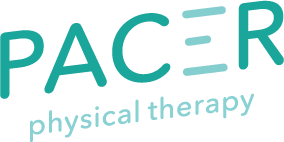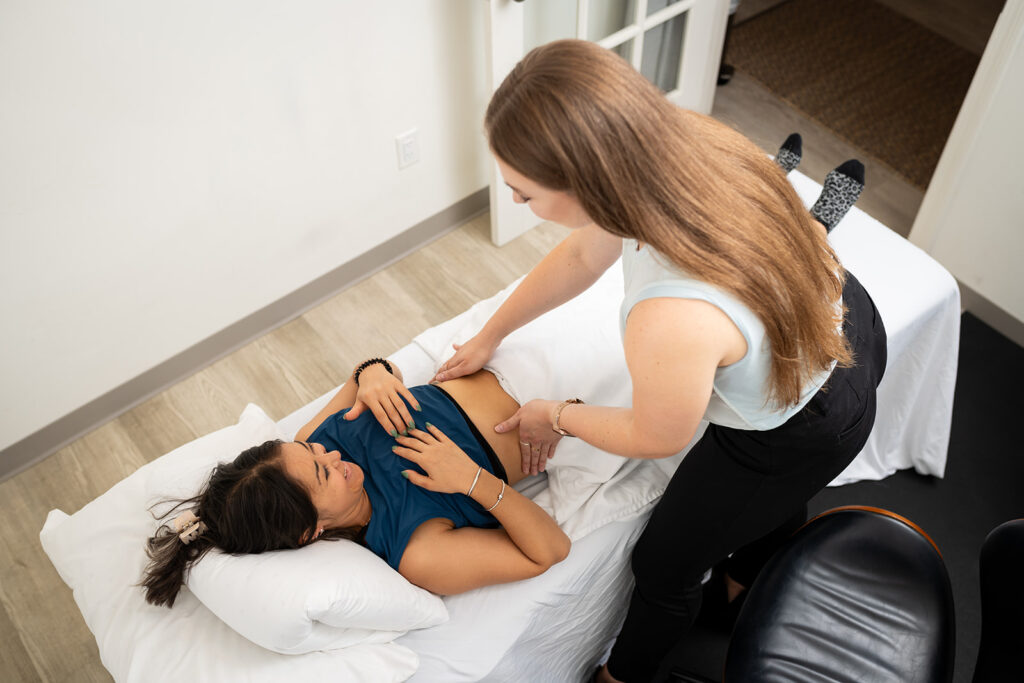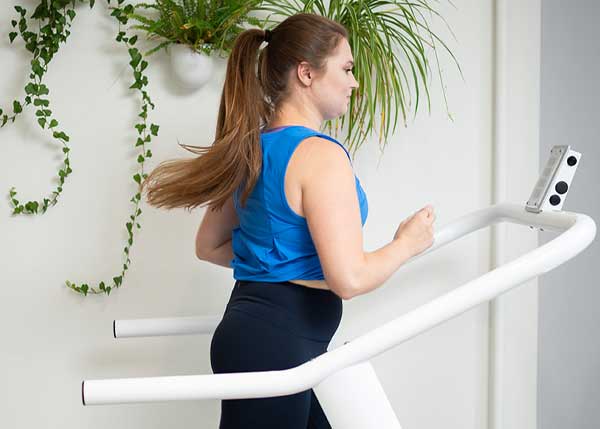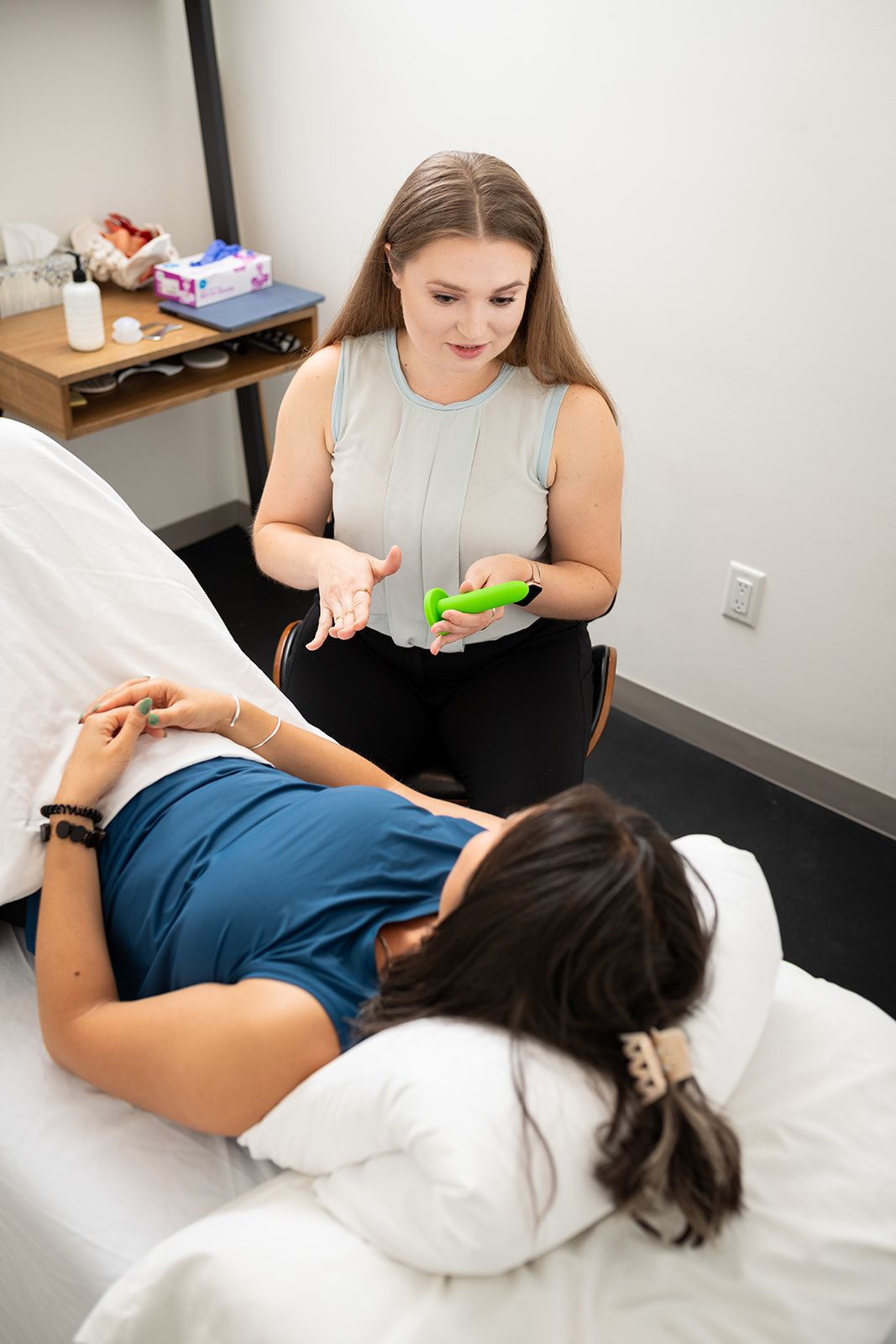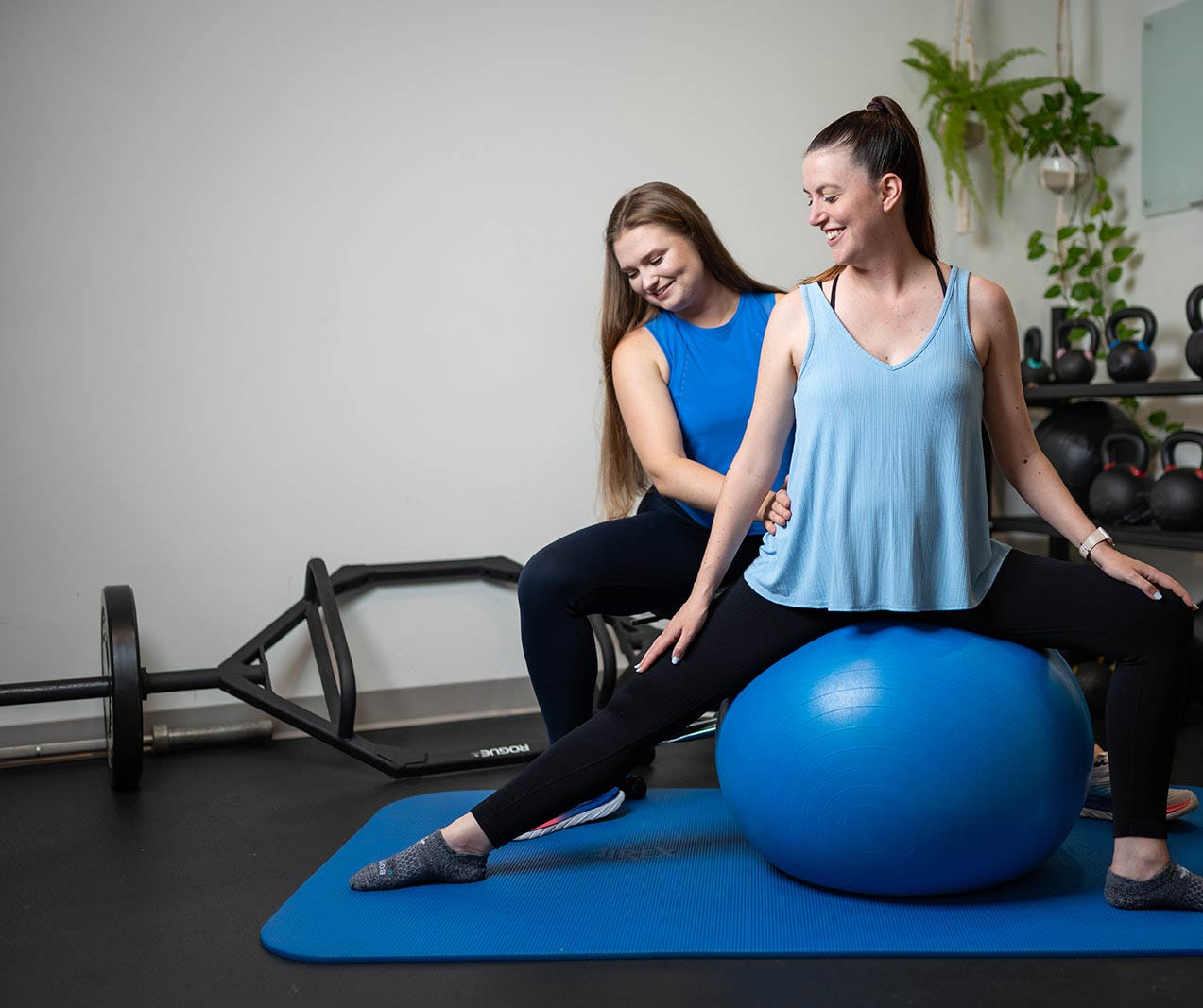Constipation is a common concern we address at Pacer Physical Therapy, especially in pelvic floor therapy. It affects about 20% of women, 40% of pregnant women, and 53% of postpartum women—which is far too many!
In a previous blog, we discussed the causes of constipation, including how pelvic floor muscles contribute to the issue, along with lifestyle changes and the benefits of pelvic floor therapy. Today, we’re focusing on what you can do in the moment to help your body have a successful bowel movement.
Tip 1: Optimize Your Toileting Posture
Did you know the path between the rectum and anus isn’t a straight line? This natural curve can make bowel movements more difficult. While we can’t completely straighten it, we can adjust the anorectal angle to encourage a smoother passage.
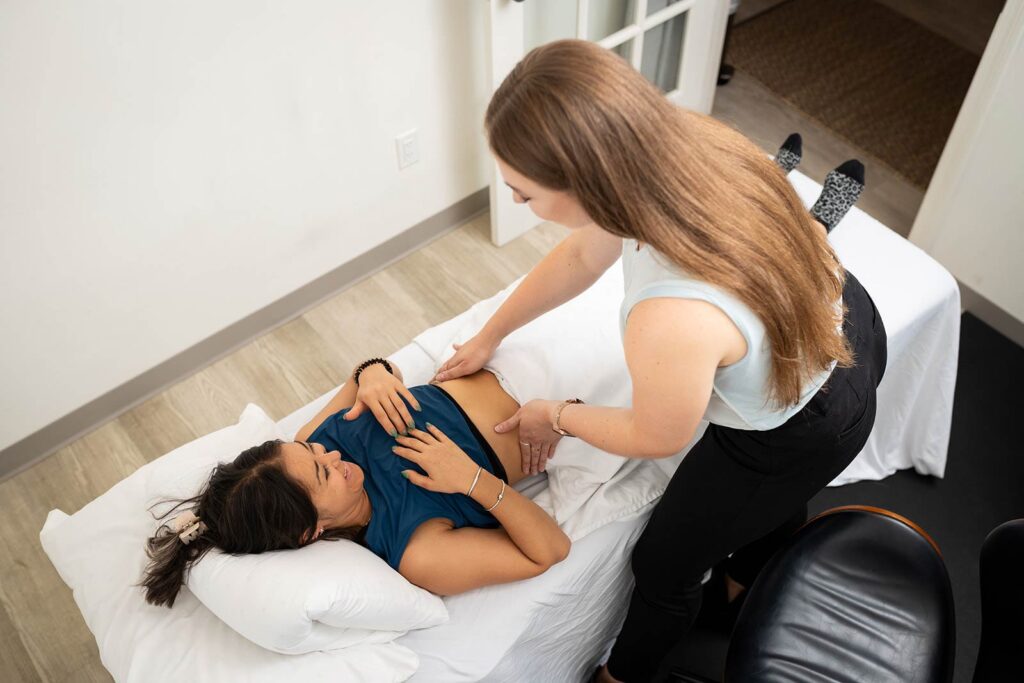
Try this positioning:
- Sit with your knees above your hips
- Lean your torso slightly forward
- Rotate your ankles outward
- Use a Squatty Potty or a small trash can to prop up your feet
Proper posture can make all the difference! Stay tuned for more constipation-fighting tips from our physical therapists at Pacer Physical Therapy.
Tip 2: Deep Belly Breathing
Many people instinctively hold their breath while pushing to generate more abdominal force during a bowel movement. While this creates pressure, it’s actually counterproductive—holding your breath can cause your pelvic floor muscles to contract instead of relaxing, making it harder for stool to pass. Over time, this habit can also increase the risk of hemorrhoids or pelvic organ descent.
Instead, focus on deep belly breathing:
- Inhale deeply to allow the pelvic floor muscles to soften.
- Exhale gently while pushing, using a controlled effort rather than excessive straining.
This method still engages your core muscles, but in a way that supports rather than stresses the pelvic floor.
Tip 3: ‘Moo’ While You Poo
Yes, you read that right! If breathing alone isn’t helping, try exhaling while making a sound—such as:
- “Shhh”
- “Ohm”
- “Moo”
- Humming
These sounds help activate your abdominal muscles while keeping your pelvic floor relaxed, ensuring you don’t hold your breath. This small change can make bowel movements easier and reduce unnecessary strain.
At Pacer Physical Therapy, our physical therapists specialize in pelvic floor therapy to help manage constipation and improve bowel health. Stay tuned for more expert tips!
Here’s the fully expanded and refined version with a professional yet approachable tone:
Tip 4: Get Moving – The Power of Gentle Motion
Movement plays a crucial role in relaxing the pelvic floor muscles and promoting healthy bowel movements. When we remain sedentary for long periods, particularly in seated positions, the pelvic floor can become tense. This tightness can contribute to constipation by making it more difficult for stool to pass through the rectum and anal canal.
By incorporating gentle, rhythmic movements, you can encourage pelvic muscle relaxation and improve overall gut motility, allowing for a more natural and comfortable bowel movement.
Movements to Promote Pelvic Floor Relaxation and Digestion:
- Pelvic Tilts: While standing or sitting, gently rock your pelvis forward and backward. This movement mobilizes the lower spine, hips, and pelvic floor, helping to release tension that may be restricting proper bowel function.
- Pelvic Circles: Standing with your feet hip-width apart, rotate your hips in slow, controlled circles. This movement encourages abdominal mobility and improves circulation to the digestive system, which can aid in relieving constipation.
- Side-to-Side Rocking: Whether seated or standing, gently sway your hips from side to side. This simple motion helps release tightness in the hip flexors, lower back, and pelvic muscles, all of which play a role in bowel function.
- Shimmies and Hip Sways: Subtle hip movements or light dancing can improve pelvic floor relaxation and support gut motility, making it easier to pass stool without excessive straining.
Engaging in these movements before or even during your trip to the bathroom can help your body naturally transition into a more relaxed state, reducing the likelihood of straining or discomfort.
Tip 5: Work with a Pelvic Health Physical Therapist
While occasional constipation can often be resolved with dietary adjustments, hydration, and movement, persistent constipation may indicate an underlying muscular imbalance. Many people assume constipation is solely related to digestive function, but pelvic floor dysfunction is a common and often overlooked contributor.
A pelvic health physical therapist is trained to assess whether muscle tightness, weakness, or poor coordination is affecting bowel function and can provide targeted interventions to address the root cause of constipation.
How Pelvic Floor Therapy Can Help with Constipation:
- Assessment of Pelvic Floor Dysfunction: A pelvic floor physical therapist can determine whether tight or overactive pelvic muscles are restricting stool passage, contributing to constipation and straining.
- Addressing Core and Hip Imbalances: The core and hips play a significant role in supporting bowel function. Tight hip muscles or a weak core can contribute to poor coordination of the pelvic floor, making elimination more difficult.
- Manual Therapy for Muscle Relaxation: Soft tissue release, myofascial techniques, and internal or external pelvic muscle work can reduce tension and restore normal function to the muscles involved in bowel movements.
- Pelvic Floor and Core Strengthening: A customized exercise program can improve pelvic floor coordination, ensuring the muscles activate and relax properly when needed. This is particularly important for individuals who experience chronic constipation due to pelvic floor dyssynergia (a condition where the pelvic floor muscles do not relax correctly during a bowel movement).
- Postural and Breathing Techniques for Better Bowel Movements: Learning proper toileting posture and using diaphragmatic breathing techniques can help optimize bowel movements, making elimination more efficient and reducing strain.
Take Control of Your Bowel Health
Constipation is more than just an inconvenience—it can affect overall well-being, digestion, and long-term pelvic health. If you struggle with chronic constipation, simple adjustments to posture, breathing, and movement can provide relief.
However, if these changes do not resolve your symptoms, it may be time to seek professional help. Pelvic floor therapy at Pacer Physical Therapy offers a comprehensive approach to addressing pelvic floor dysfunction, identifying the underlying causes of constipation, and developing a personalized treatment plan to restore comfort and function.
If you’re ready to find lasting relief, schedule a complimentary consultation today and take the first step toward better bowel health and pelvic wellness.
Personalized Care for Your Unique Journey
Every body is different, and each person’s experience with pelvic health and movement is unique. At Pacer Physical Therapy, we are committed to providing individualized care that meets your specific needs and goals.
Our expert physical therapists will work with you to:
- Develop a personalized treatment plan tailored to your body’s needs
- Help you feel empowered and confident in your movement and daily activities
- Support you throughout your journey to a symptom-free life and beyond
No matter where you are in your pelvic health journey, we are here to guide you every step of the way.
Take the first step today—book a complimentary discovery call and start feeling your best.
You’ve got this,
Dr. Vera
